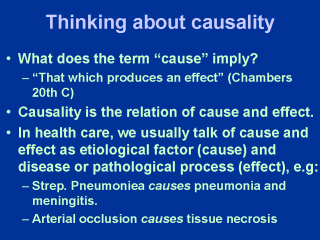| front |1 |2 |3 |4 |5 |6 |7 |8 |9 |10 |11 |12 |13 |14 |15 |16 |17 |18 |19 |20 |21 |22 |23 |review |
 |
We use the word
“cause” far too loosely. Few things in medicine have clear causes, though disease
determinants, risk factors and precursors can and have been readily identified. Loose language both reflects and leads to loose thinking. When we say a virus “causes” a disease, is that really the case? For example, do the viruses associated with common Colds cause the colds?
For causality to be confirmed, certain criteria must be met. Does the virus model of colds fit these criteria? The cold viruses are almost always present, but cold symptoms are not; Increasing the viral load increases symptoms. No symptoms in the absence of viruses. Viruses are plausible biological agents. So, viruses seem to be necessary, but they are only part of the picture. And that is the problem because it is all too often assumed that they are the whole picture. And that is wrong. |
| front |1 |2 |3 |4 |5 |6 |7 |8 |9 |10 |11 |12 |13 |14 |15 |16 |17 |18 |19 |20 |21 |22 |23 |review |